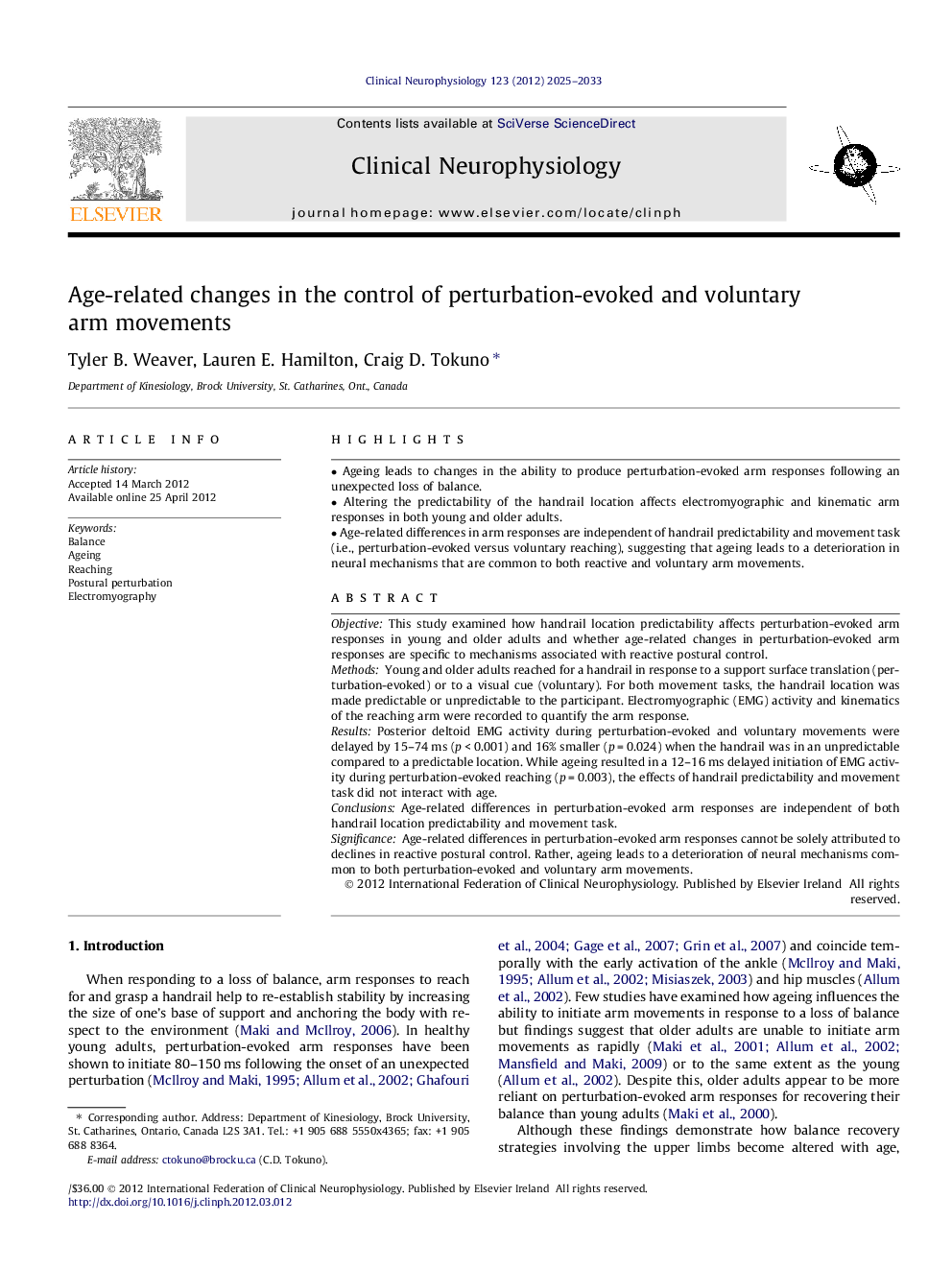| Article ID | Journal | Published Year | Pages | File Type |
|---|---|---|---|---|
| 3045386 | Clinical Neurophysiology | 2012 | 9 Pages |
ObjectiveThis study examined how handrail location predictability affects perturbation-evoked arm responses in young and older adults and whether age-related changes in perturbation-evoked arm responses are specific to mechanisms associated with reactive postural control.MethodsYoung and older adults reached for a handrail in response to a support surface translation (perturbation-evoked) or to a visual cue (voluntary). For both movement tasks, the handrail location was made predictable or unpredictable to the participant. Electromyographic (EMG) activity and kinematics of the reaching arm were recorded to quantify the arm response.ResultsPosterior deltoid EMG activity during perturbation-evoked and voluntary movements were delayed by 15–74 ms (p < 0.001) and 16% smaller (p = 0.024) when the handrail was in an unpredictable compared to a predictable location. While ageing resulted in a 12–16 ms delayed initiation of EMG activity during perturbation-evoked reaching (p = 0.003), the effects of handrail predictability and movement task did not interact with age.ConclusionsAge-related differences in perturbation-evoked arm responses are independent of both handrail location predictability and movement task.SignificanceAge-related differences in perturbation-evoked arm responses cannot be solely attributed to declines in reactive postural control. Rather, ageing leads to a deterioration of neural mechanisms common to both perturbation-evoked and voluntary arm movements.
► Ageing leads to changes in the ability to produce perturbation-evoked arm responses following an unexpected loss of balance. ► Altering the predictability of the handrail location affects electromyographic and kinematic arm responses in both young and older adults. ► Age-related differences in arm responses are independent of handrail predictability and movement task (i.e., perturbation-evoked versus voluntary reaching), suggesting that ageing leads to a deterioration in neural mechanisms that are common to both reactive and voluntary arm movements.
